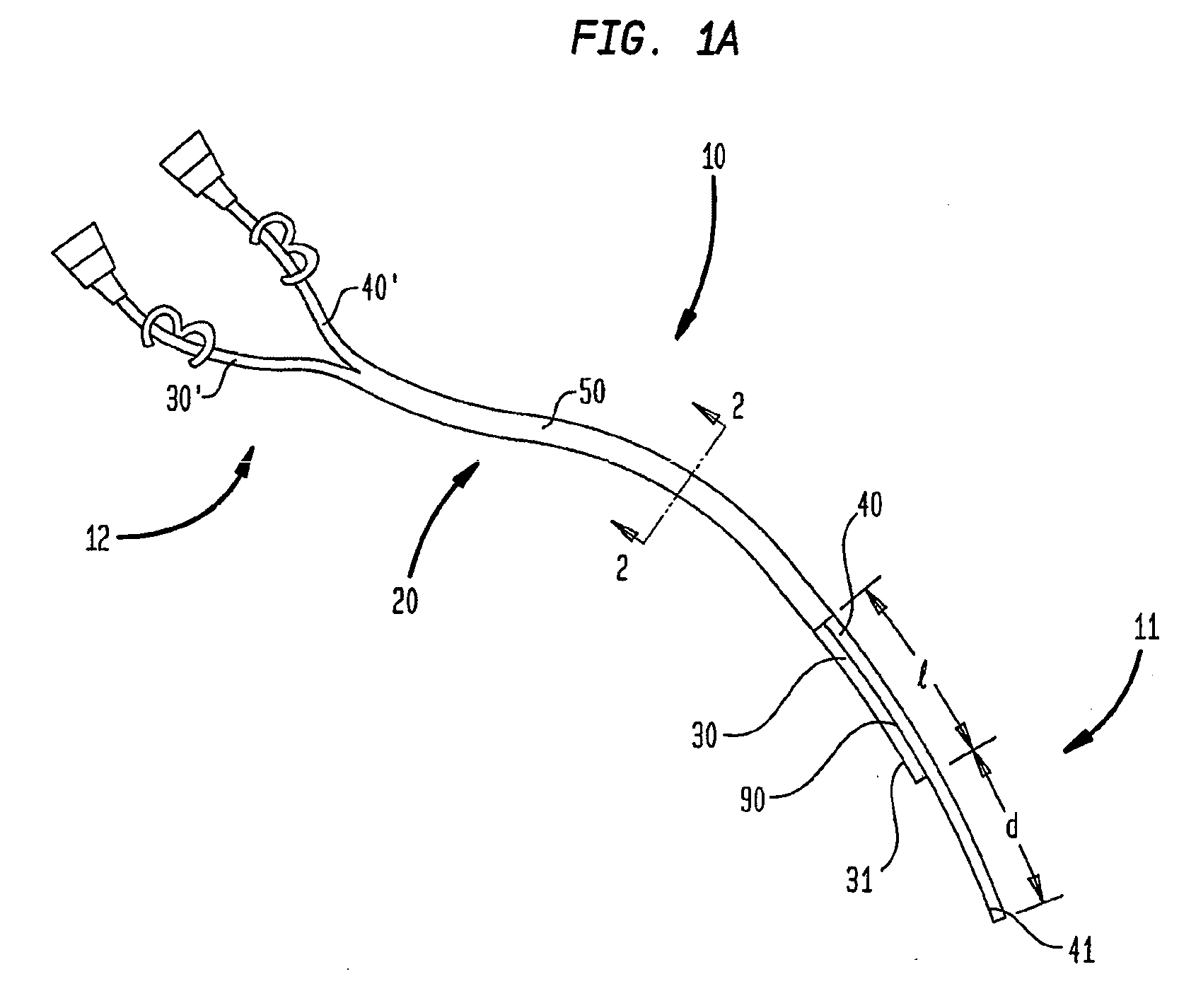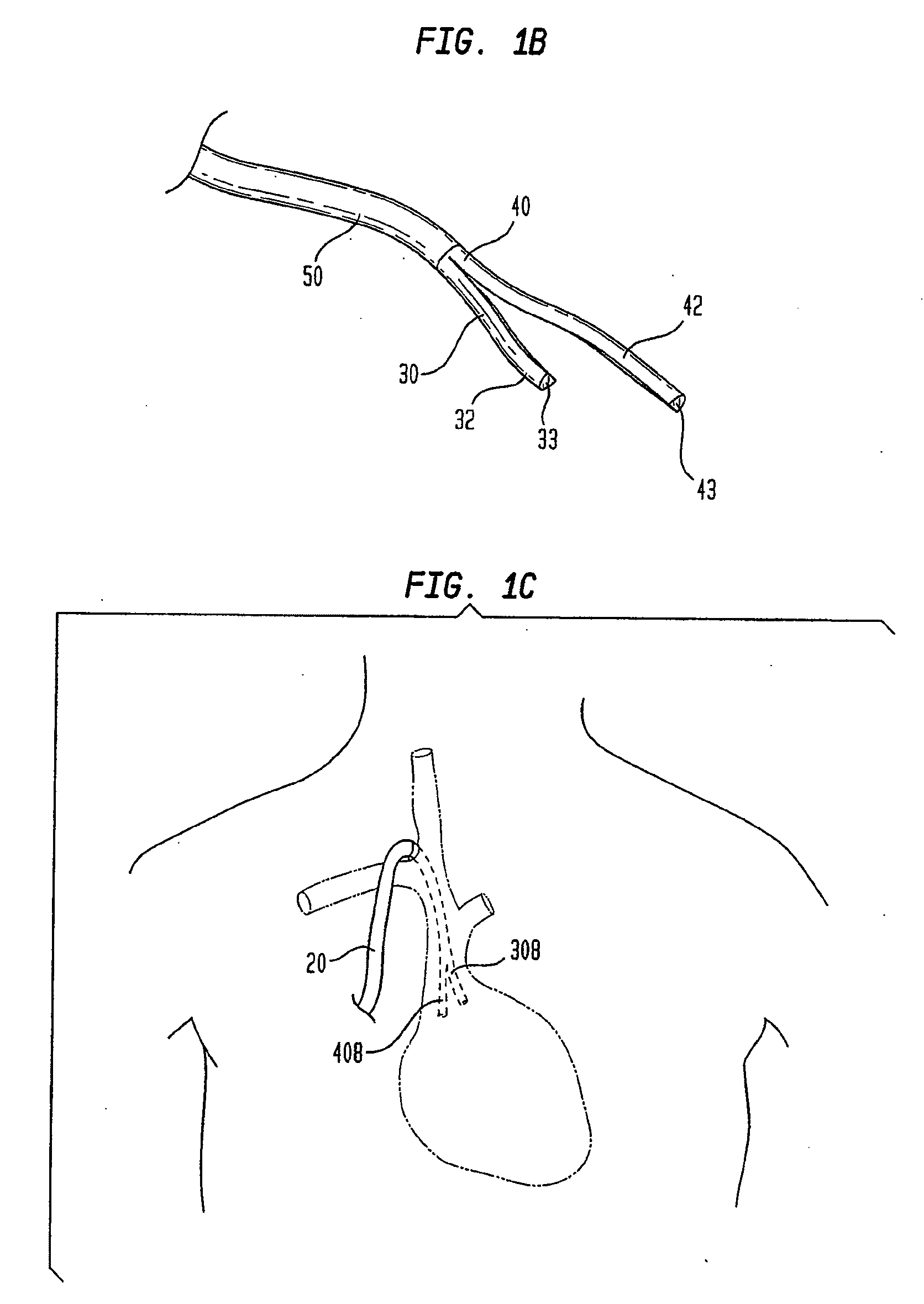Splitable tip catheter with bioresorbable adhesive
a bioresorbable adhesive and tip catheter technology, applied in the field of multi-lumen catheters, can solve the problems of reducing blood flow rate, inadequate dialysis, reducing clearance, etc., and achieve the effects of facilitating distal tip insertion, facilitating distal end insertion, and facilitating separation
- Summary
- Abstract
- Description
- Claims
- Application Information
AI Technical Summary
Benefits of technology
Problems solved by technology
Method used
Image
Examples
Embodiment Construction
[0043]As used herein, the term “bioresorbable” refers to materials that are biodegradable or biosoluble such that they degrade or break down by mechanical degradation upon interaction with a physiological environment into components that are metabolizable or excretable over a period of time.
[0044]The present invention includes various embodiments of a multi-lumen catheter for hemodialysis and methods of use. As shown in FIGS. 1A and 1B, one embodiment of catheter 10 includes an elongate body 20 having proximal and distal end 11 and 12, and at least one blood extraction lumen 30 and at least one blood return lumen 40 extending longitudinally therethrough. Each lumen 30, 40 has a proximal end 30′, 40′ adapted to direct fluid to, or couple directly with, a hemodialysis apparatus (not shown), and a distal end 31, 41 for insertion into a blood vessel. Distal extraction and return tip portions 32, 42 of each lumen 30, 40 include a distal end opening 33, 43 formed therein to provide for si...
PUM
 Login to View More
Login to View More Abstract
Description
Claims
Application Information
 Login to View More
Login to View More - R&D
- Intellectual Property
- Life Sciences
- Materials
- Tech Scout
- Unparalleled Data Quality
- Higher Quality Content
- 60% Fewer Hallucinations
Browse by: Latest US Patents, China's latest patents, Technical Efficacy Thesaurus, Application Domain, Technology Topic, Popular Technical Reports.
© 2025 PatSnap. All rights reserved.Legal|Privacy policy|Modern Slavery Act Transparency Statement|Sitemap|About US| Contact US: help@patsnap.com



